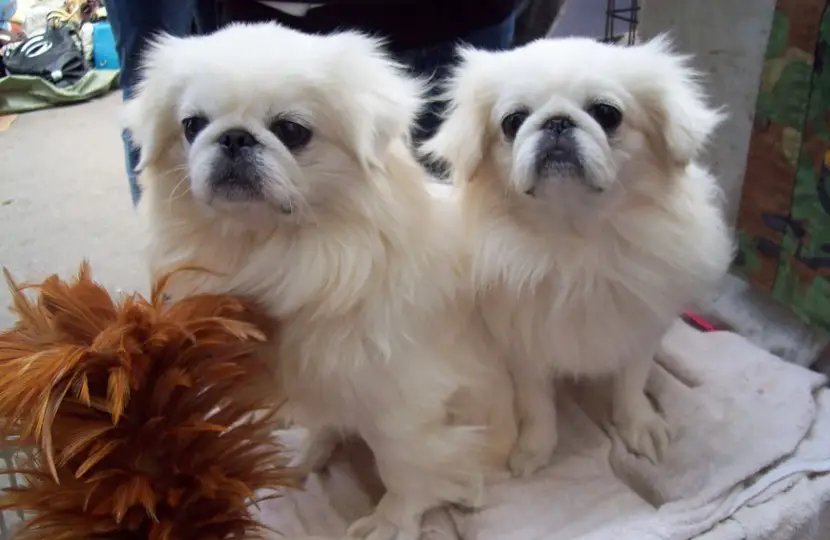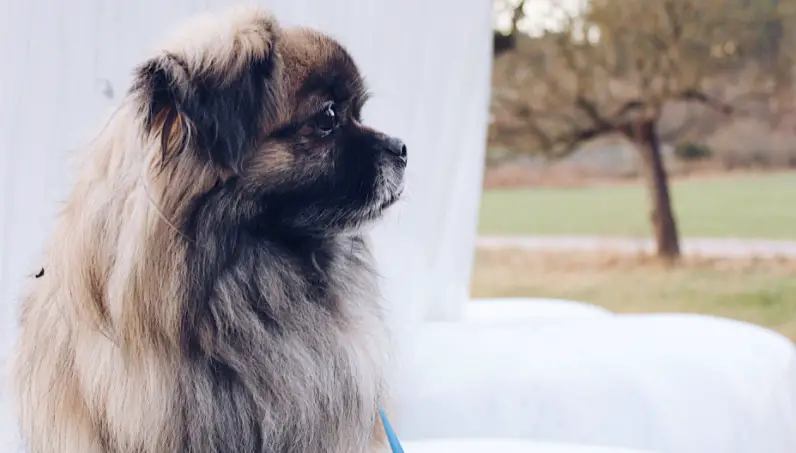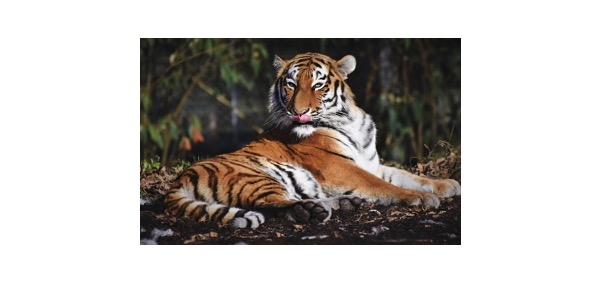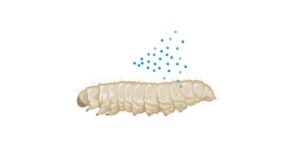Table of Contents
Pekingese: All You Need To Know
The Pekingese is a small domestic animal which belongs to the kingdom of Animalia, phylum Chordata, and class Mammalia. Its genus is Canis and its species is C. lupus familiaris. Its length is 15 to 23 cm and it weighs about 3.5 to 6.5 kg. It lives in the domestic habitat, with a lifespan of 12 to 15 years.

Pekingese Description
The Pekingese is a tiny Chinese domestic dog breed. It has long, coarse fur and is known as the Lion Dog of China due to its aggressive and devoted character, despite its small size. Pekingese dogs may be one of the oldest domestic dog breeds, with a history dating back over 2000 years.

Pekingese Appearance
Pekingese are tiny dogs that are known for their cuteness. They have a lengthy mane of straight hair and big brown eyes. Their fur-covered tails are held high over their backs. Their coat is thick and long, and it is usually brown or ‘fawn’ in colour, although it can be any hue or mix of colours and patterns.
In China, solid white Pekingese are very prized. Their coat is coarse, and show dogs’ coats are usually straight and considerably longer than the average domestic dog’s. They have a soft undercoat below this topcoat.

They are comparable in size to popular little breeds like Shih Tzus and Chihuahuas. They are, nevertheless, very large for their stature, standing just 6-9 in (15-23 cm) tall and weighing 7-14 pounds (3.5-6.5 kg).
Because they were so little, they could ride around in the sleeves of the lavish robes used by members of the Imperial Court of China. Any exceptionally small animals were historically referred to as “sleeve dogs” in China.
Pekingese History
The Pekingese are a Chinese ethnic group that has lived in China for at least 2 000 years and are called after the capital city of Peking (now Beijing). They are, in fact, one of the oldest dog breeds still in existence. They were treasured by noblemen in China for centuries and, finally, by Queen Victoria in England.
Their popularity eventually extended over the Atlantic, and the American Kennel Club recognized a Pekingese named Rascal in 1906. The AKC now lists them as the 49th most popular breed.

Pekingese as Pet
Because Pekingese are tiny dogs, they are ideal for apartment life. They are recognized for their flexibility and desire to work with people from all walks of life. They are, nevertheless, well-known for their proclivity to bark. They are also suspicious of outsiders, which makes them an excellent guard dog for warning their owners.
However, their diminutive height does not lend itself well to actually guarding them from greater threats. They are, nevertheless, extremely devoted and will go to great lengths if required. Pekingese are clever, but they also have a strong sense of independence.
As a result, it will take a substantial amount of time and effort to effectively teach them. They are self-assured, if not arrogant, and do not respond well to heavy punishment. Their long, thick coats also need a lot of grooming and attention.
As a result, getting the most out of these popular pets requires a patient and knowledgeable owner. They are not suitable for homes with little children or other animals because to their fear of others.
However, like with other dogs, it is critical that they receive lots of socialization early in life in order to effectively control their undesirable habits. Females give birth to small litters of 2-4 puppies on average, and most individuals live for 12-15 years.

Fun Facts About Pekingese!
Much Confidence in a Small Package
Despite their tiny stature, Pekingese are known for their self-assurance. It should come as no surprise, then, that the breed has long been regarded with respect in Chinese high society, especially the Imperial Court of China.
Members of the breed act quite self-important, as if still conscious of this, and will often be the first living creature in the room to welcome a newcomer, as if demanding a little attention and reverence. They were so revered in Chinese high society that when leaders of large Chinese armies visited the Imperial Court of China to talk with noblemen, they bowed to them.
Pekingese: a Monkey and a Marmoset
It’s no surprise that their genesis story is the stuff of legends, given their lengthy relationship with the Chinese monarchy. According to legend, a lion and a marmoset (a monkey-like creature) fell in love.
The lion, however, was so much larger than the marmoset that he prayed to Buddha to shrink him so that he might be with his marmoset lover while keeping his enormous lionheart. The progeny of these odd lovers are supposed to have become ‘Fu Lin,’ China’s lion dogs, or ‘Pekingese,’ as they are known in the west.
Although biologically incorrect, this mythology goes a great way toward explaining their tenacious attitude despite their little stature. Given that it is one of the world’s oldest dog breeds, it is impossible to learn more about the breed’s history in any other way. As a result, it’s simple to see why a legend has taken the place of a more solid origin narrative.
From Peking to Buckingham
Eventually, the species made its way to the West during the Opium War in 1860, despite decades of restriction to China and even to the palaces of noblemen. Five individuals of the species were among the spoils of war returned to England when troops entered the imperial palace during the conquest of Peking, including one dubbed “Looty” who was handed to Queen Victoria herself.
However, by the 1890s, more and more of these dogs were being smuggled out of China, and they were becoming increasingly prevalent in England, Europe, and, finally, North America.
Pekingese: Who’s Snoring
Even while resting, the Pekingese can maintain his status as the focus of attention. The disease known as brachycephalic airway obstruction syndrome, or BAOS, affects Pekingese, as well as many other breeds designed to have shorter noses and faces.
Although adorable, their exaggerated facial characteristics are accompanied with physiological problems like as a short trachea, narrow nostrils, and a soft pallet, all of which impede their breathing and contribute to their inclination to snore loudly.
Pekingese Citations
- Pekingese breed standard. Pekingese breed standard. Vet Rec . 1989 Apr 29;124(17):471-2.
- Characteristics of and risk factors for intervertebral disk extrusions in Pekingese. J Am Vet Med Assoc . 2018 Apr 1;252(7):846-851.
- Radiographic liver size in Pekingese dogs versus other dog breeds. Vet Radiol Ultrasound . Mar-Apr 2013;54(2):103-6.













